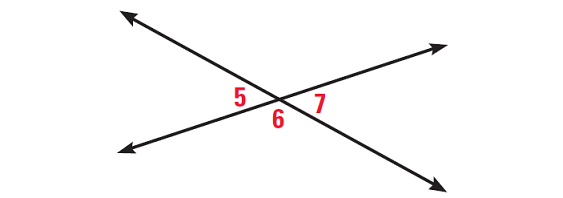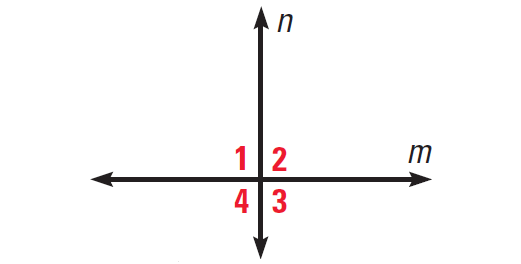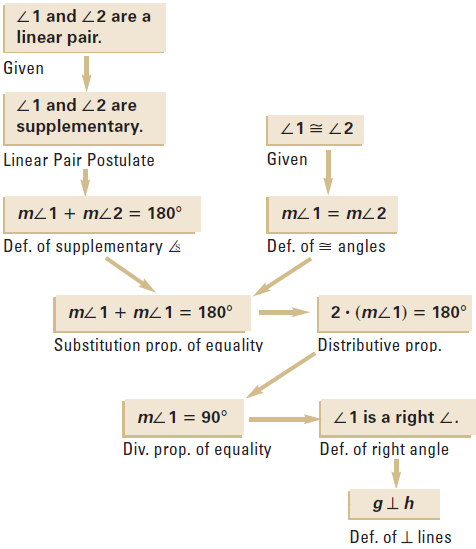PROOF AND PERPENDICULAR LINES WORKSHEET
Problem 1 :
In the diagram given below,
∠5 and ∠6 are a linear pair
∠6 and ∠7 are a linear pair

Problem 2 :
In the diagram given below, ∠1 and ∠2 are congruent and also a linear pair. Using flow proof, prove that the lines g and h are perpendicular.

Problem 3 :
If two sides of the adjacent acute angles (2x + 3)° and (4x - 6)° are perpendicular, find the value of 'x'.
Problem 4 :
In the diagram given below, the lines m and n are perpendicular. Find the measures of the angles ∠1, ∠2, ∠3 and ∠4.


1. Answer :

Two-column Proof :
|
Statements ∠5 and ∠6 are a linear pair ∠6 and ∠7 are a linear pair ∠5 and ∠6 are complementary ∠6 and ∠7 are complementary ∠5 ≅ ∠7 |
Reasons Given Linear pair postulate Congruence Supplements theorem |
Paragraph Proof :
Because ∠5 and ∠6 are a linear pair, the linear pair postulate says that ∠5 and ∠6 are supplementary. The same reasoning shows that ∠6 and ∠7 are supplementary. Because ∠5 and ∠7 are both supplementary to ∠6, the congruent supplements theorem says that ∠5 ≅ ∠7.
Flow Proof :

2. Answer :


3. Answer :
According to result 2, if two sides of two adjacent acute angles are perpendicular, then the angles are complementary.
So, we have
(x+3)° + (2x-6)° = 90°
x + 3 + 2x - 6 = 90
Simplify.
3x - 3 = 90
Add 3 to both sides.
3x = 93
Divide both sides by 3.
x = 31
4. Answer :

According to result 3, if two lines are perpendicular then they intersect to form four right angles.
So, we have
m∠1 = 90°
m∠2 = 90°
m∠3 = 90°
m∠4 = 90°
Kindly mail your feedback to v4formath@gmail.com
We always appreciate your feedback.
©All rights reserved. onlinemath4all.com
Recent Articles
-
Digital SAT Math Problems and Solutions (Part - 146)
Apr 18, 25 06:52 AM
Digital SAT Math Problems and Solutions (Part - 146) -
Logarithmic Derivative Problems and Solutions
Apr 16, 25 09:25 PM
Logarithmic Derivative Problems and Solutions -
Digital SAT Math Problems and Solutions (Part - 145)
Apr 16, 25 12:35 PM
Digital SAT Math Problems and Solutions (Part - 145)

